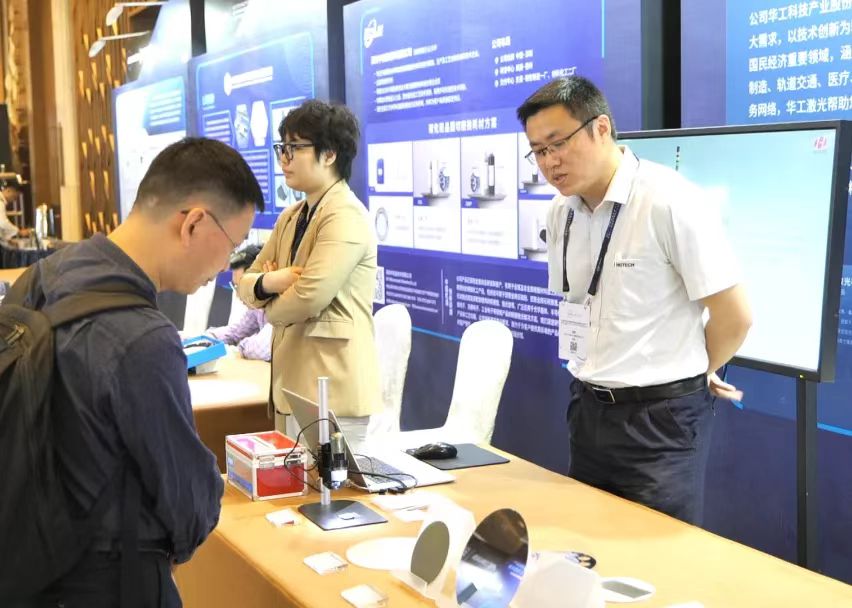The current international competition has escalated from product competition and enterprise competition to competition between industry chains. The next 2-3 years are a critical period for the development of the compound semiconductor industry, and China urgently needs to form a mass supply capacity for internationally competitive products Gan Yong, an academician of the CAE Member and director of the National Expert Advisory Committee for New Material Industry Development, made an impassioned speech at the opening ceremony of the 2023 China Optics Valley Jiufeng Mountain Forum and Compound Semiconductor Industry Development Conference.
As the Moore's Law, which is dominated by silicon semiconductor materials, gradually reaches its physical limit, silicon based products are no longer able to meet the rapid development needs of new demands such as microwave radio frequency, high-efficiency power electronics, and optoelectronics. Compound semiconductor materials, represented by third-generation semiconductors, are rapidly emerging. However, during the forum, several industry insiders told reporters that although the development of compound semiconductors represented by third-generation semiconductors is expected to become a new growth pole in the industry chain, the pain points and bottlenecks in the industry also need to be paid attention to.
Compared with integrated circuits, compound semiconductor manufacturing has relatively low requirements for downstream manufacturing equipment and relatively small investment. Therefore, it can to some extent break away from the dependence on advanced processing equipment represented by high-precision lithography machines, and is a promising breakthrough in the semiconductor field in recent years.
The reporter learned that the third-generation compound semiconductors, represented by silicon carbide and gallium nitride, are currently popular in the market. The third-generation semiconductors are expected to be widely used in the construction of information highways based on the optoelectronic industry, fiber optic communication networks, 5G communication, and other industries.
At the same time, in the field of new energy vehicles, local semiconductor companies such as San'an Radio and Television and North Huachuang are gradually making efforts. According to the General Manager of the Development Department of North Huachuang Substrate Materials Industry, with the rapid growth of the new energy vehicle market, the company's third-generation semiconductor assembly equipment is in a state of oversupply. Zhang Zhenrong, Deputy General Manager of Sales at San'an Semiconductor, previously told reporters from First Financial that the domestically produced silicon carbide power semiconductor used for the main drive of the company is expected to officially "launch" in the fourth quarter of 2023.
However, during the forum, many industry insiders also told First Financial reporters that the coordination between compound semiconductors and academia in the current development process is a noteworthy issue.

People may feel that the pain point is from 0 to 1, but it is also difficult to go from 1 to 10, and 10 to n is even more difficult, "Zhao Yong, Chief Operating Officer of Jiufengshan Laboratory in Wuhanguan Valley, told reporters. Zhao Yong stated that from the perspective of technological breakthroughs, even if scientific research has been developed from scratch, without corresponding demand scenarios to drive it, there is no place to use technological breakthroughs. At the same time, new technologies cannot be guaranteed in terms of product production capacity and yield during the 1-10 process. To truly achieve large-scale production of 10 to n, it is even more necessary to "ripen" the technology and products that come out of the laboratory through application.
Gan Yong pointed out that the development of the third-generation semiconductor industry has shown obvious characteristics of application traction. Currently, there are still problems in the industry, such as a lack of effective integration of upstream and downstream industries, blocked chains, weak and scattered enterprises, and low-level repetitive construction.
Wu Ling, Chairman of the Third Generation Semiconductor Industry Technology Innovation Strategy Alliance, told reporters that currently, the industry should emphasize more on formulating technology strategies from the industrial strategy, defining requirements from the application side, and then considering design, process, and new standards in production, in order to truly move towards external circulation while achieving internal circulation.
She calls for a collaborative mechanism among universities, research institutions, and enterprises. Scientific research institutions should not only undertake basic research projects from universities, continuously set questions for universities, tell the academic community where the needs of the industry are, but also connect with industry forces to help enterprises iterate their research and development capabilities.


